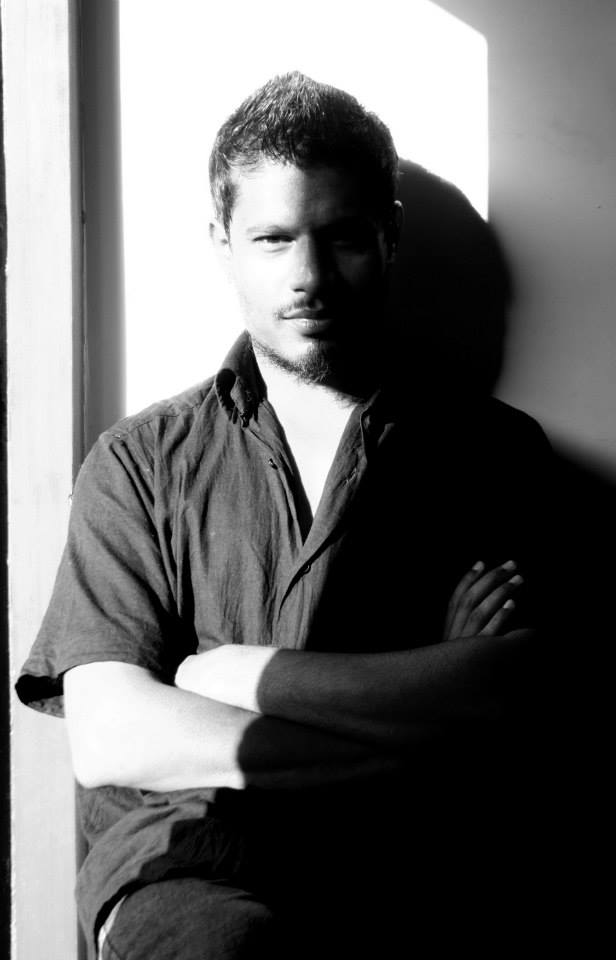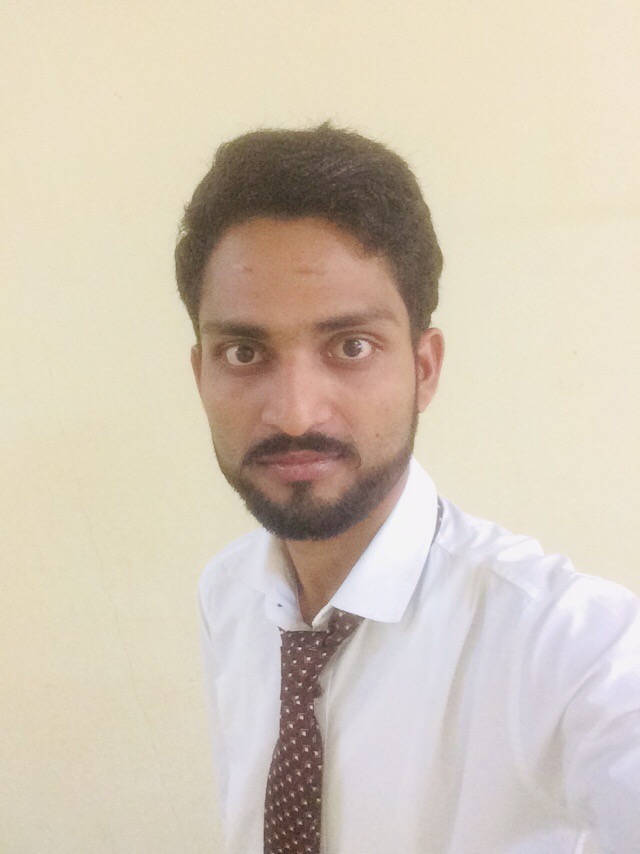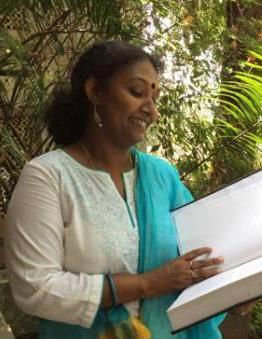Yogesh Maitreya
 Somewhere in 2012, back in Nagpur, I had read an article on Sambhaji Bhagat, poet, balladeer and a rebellious playwright from Maharashtra. He is also a vigorous Ambedkarite activist, in his own words, “main Babasaheb ka baccha hu” (‘I am the descendent of Babasaheb’). While living in Nagpur I had hardly heard of him, or seen anybody talking about his thought-provoking work. A year later in 2013, when I came to Mumbai for my studies and started studying dalit literature and art more seriously, I realised that Sambhaji Bhagat had his own space in the Maharashtrian tradition of Ambedkarite balladeers. As I learnt a little more about him, he was also turned out to be a playwright who had not only portrayed incisively dalit lives and politics on the stage, but also instrumental in spreading the aesthetics of dalit imagination across the world, through his plays.
Somewhere in 2012, back in Nagpur, I had read an article on Sambhaji Bhagat, poet, balladeer and a rebellious playwright from Maharashtra. He is also a vigorous Ambedkarite activist, in his own words, “main Babasaheb ka baccha hu” (‘I am the descendent of Babasaheb’). While living in Nagpur I had hardly heard of him, or seen anybody talking about his thought-provoking work. A year later in 2013, when I came to Mumbai for my studies and started studying dalit literature and art more seriously, I realised that Sambhaji Bhagat had his own space in the Maharashtrian tradition of Ambedkarite balladeers. As I learnt a little more about him, he was also turned out to be a playwright who had not only portrayed incisively dalit lives and politics on the stage, but also instrumental in spreading the aesthetics of dalit imagination across the world, through his plays.
During these two years in Mumbai, I have seen him in many protests against caste atrocities held in Mumbai or in rallies, often marching like a soldier against caste. Recently, I had the opportunity to watch his play ‘Bombay 17’, which reaffirmed my earlier perception of his poetry, ballads, plays and his artistic personality.
A week later I sought his number from a friend of mine who is also a poet and an Ambedkarite activist. When I called him, Sambhaji responded in a very friendly manner, his ‘Jai Bhim’ sounded fraternal on the phone. As I put forward the idea of interviewing him, he asked me to come the next day.
That evening, the roads of Mumbai were busy with people and I had started without having a proper address (as I hadn’t taken it earlier). I called him up and he directed me towards the address over phone. As I reached the place, Sambhaji welcomed us with a broad welcoming gesture, with a shining face and smile. Without any delay, he offered us tea. And we started talking.
On ‘Bombay 17’
Since I had watched this play, I thought it much better to start our conversation with it. I told him that we could proceed like a conversation rather than a typical interview. He agreed again with smile.
At the level of language, ethnographic details, nuances of slum-life, the remarkable struggle of the people there and their spirit, I found that Bombay 17 was a play that provides new dimensions to Marathi theatre. I asked him, why did he create Bombay 17? I was expecting a philosophical answer. But with a serious tone he said, ‘You see, there are about 60% people residing in slums (majorly dalits/bahujan). They live here and die here. These cities are built up on their hard work. If the city looks beautiful, it is because the aesthetic flows from these people’s hands. But you do not see them often in the discourses on the artistic domain. Here, I tried to do that. It is the first time slum-life has been portrayed in Marathi-theatre or stage’.
The play has an unconventional subject, something that is often neglected by the elite dominated art circles in India. In its outlook, Bombay 17, to a great extent, embraced the elements of aesthetics of subaltern lives, including humour, love, tragedy, longing, pathos, compassion and wisdom. Not only is the play subject-centric, but it also powerfully narrates the insights of subaltern people, mostly dalits, about the whole course of life and society. The play is the complete antithesis to the Brahminic-imagination of art and works on the contours of the subaltern-aesthetic. Unlike his previous play Shivaji Underground in Bhimnagar Mohalla, Bombay 17 is completely different in its subject and treatment. If in his last play he shook the popular Brahminic monopoly of stage/theatre in Marathi language, in his Bombay 17, he seemed to create the theatre as well as the language for subaltern/dalits in the world of theatre/stage.
While the play focuses on the subjects like dalit-imagination, Ambedkarism, slum-culture, the spirit and hopes of people there, dilemmas over politics, naxalism and many more, it is also embedded with insights and hope for the generation which wants to see change. I was curious about what the protagonist of his Bombay 17 wanted to say, and when I asked Sambhaji about it, he replied, man must communicate with himself. You see the Buddha also said the same thing, Atta Deep Bhava (Be your own master). Because once he starts communicating with himself, he will find the answers on his own. Then nobody can deceive him. And today all the political havoc is because of this lack of reflection over oneself.
Sambhaji on Politics and Art
‘Nowadays democratic spaces are diminishing’ Sambhaji said, gesturing his hands to substantiate the energy with which he was explaining the crisis in politics in general and the politics of dalit parties in particular. Even on subjects like politics, he seemed to develop an artistic, perhaps a creative answer, as he said ‘crisis of Ambedkarites parties is not person-oriented, rather it is ideology-oriented. This is not the problem of the person, but of the ideology. The problem with dalit political parties is basically ideological, as they do not try to study and understand Ambedkar in depth. You see’ he paused and continued ‘since they have ideological problems, establishment can easily co-opt them. That’s what the establishment, ruling class wants. This establishment has an agenda and the motive to do so. This way, these parties have been using Ambedkar as a political instrument, not as source of ideology. What we need to do is not only read but develop the thoughts of Ambedkar’. By this time he was filled with unfathomable energy and spontaneity. He continued ‘you see, Ambedkar has got devotees not disciples who could develop his thoughts further. There is the need to take Ambedkar into other communities. Has any politician ever tried to take Ambedkar into other communities? No.’
Recollecting his thoughts on participation of youth in the recent protests against Kharda and Javkheda atrocities where dalits have been brutally killed by caste-hindus, he explained, ‘See, when I was there during the protest against these incidences, I had seen youths, and they all were young, concerned, knew how to ask questions. But on the stage there was no political figure. It seemed as if there was blatant resistance to call some political personalities onto the stage to speak. Why? The message was clear: people are educated and aware. They are frustrated with the political havoc and hundreds of segments of republican parties’.
‘But your generation is asking questions now’, he said in his firm voice, ‘we need space for creativity and this space in which something new could prosper, is being demolished by the established dominant forces. They do not want you to think’. Here he talked of the post-modernist approach. ‘You see this post-modernism is eroding the significance of ideology. Then what must we do. We should not interfere in the work of what others are doing. People must stop relying on politicians for their welfare. People must get engaged in creative efforts. You see, people abuse me but I answer them through my plays, songs and poetry, through my art. You see, Bombay 17 has been selected at a national level program at NSD (National School of Drama, Delhi) and it will be staged in Germany soon’.
~~~
Yogesh says:
My name is Yogesh Maitreya. I am from Nagpur. I am doing my M.A in Criminology and Justice (2013-15) from TISS (Tata Institute of Social Sciences, Mumbai).
Photos by Daisy Katta










